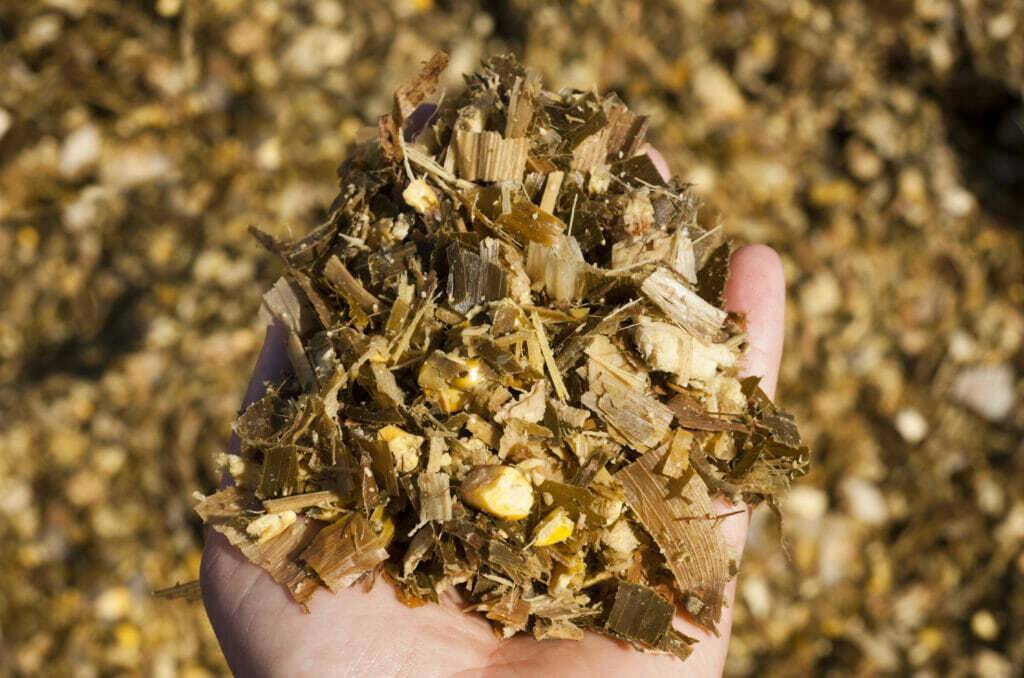Planting depth matters! In this week’s #AskTheAgronomist, our special guest Corn Product Manager Lyle Marcus shows results from some on-farm studies on the effects of planting depth on plant, root and ear development.
-
Latham Hi‑Tech Seeds
#AskTheAgronomist: Planting Depth Effect on Ear and Root Development

-
Latham Hi‑Tech Seeds
#AskTheAgronomist: Late-Season Scout Now to Create Success Next Season

Recent heavy rains combined with high temperatures can create isolated cases of soybean disease. In this episode of #AskTheAgronomist, Precision Agronomist Phil Long addresses the basics of the big six and the benefits of late-season scouting to create success for next season.
-
Latham Hi‑Tech Seeds
AlfaShield Gives Seed a Competitive Edge
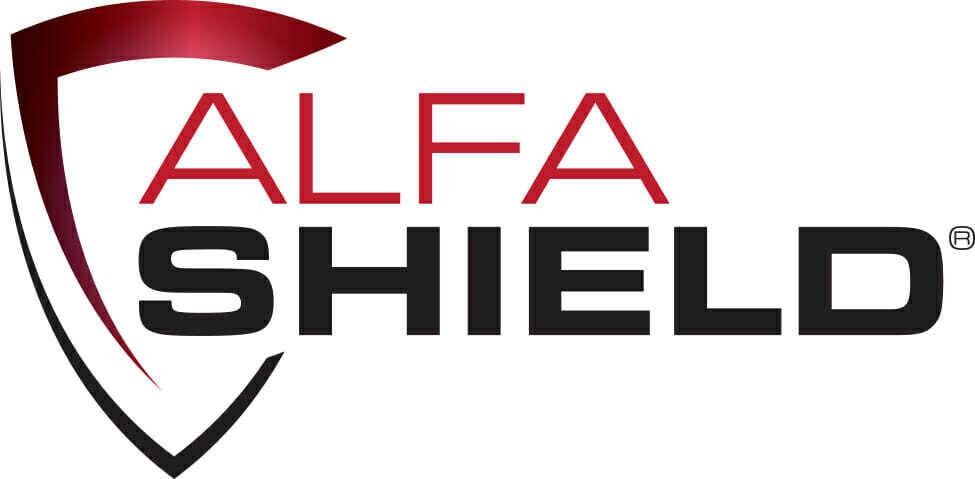
What gives you a competitive edge?
There are many clever practices that can give athletes an edge. When drug testing became a standard, athletes had to discover legal ways to get an edge. It was noted that athletes who trained at higher elevations tended to perform better. As science progressed, they discovered the oxygen concentration is less at high elevations. Over a long period of time, our bodies will release a hormone to stimulate the production of more red blood cells because red blood cells carry oxygen in the blood. When the athletes returned to lower elevations to perform, they had more capacity to perform because they had significantly more red blood cells.
 How in the world does this relate to alfalfa? Think of the seed as an athlete of the acre, competing to germinate quickly and yield more. When we add AlfaShield seed treatment, the alfalfa seed has a performance-enhancing advantage. AlfaShield provides a distinctive winning edge as it combines a list of highly researched ingredients and incorporates them into an osmotic protective type coat.
How in the world does this relate to alfalfa? Think of the seed as an athlete of the acre, competing to germinate quickly and yield more. When we add AlfaShield seed treatment, the alfalfa seed has a performance-enhancing advantage. AlfaShield provides a distinctive winning edge as it combines a list of highly researched ingredients and incorporates them into an osmotic protective type coat.Think of AlfaShield as wrapping your alfalfa seed in a sponge. It helps protect the fragile germ of the seed. It also helps draw moisture to the seed, which is particularly important when seeding into moisture-stressed soils. Summers-seeded alfalfa is up against the time clock to get four to six weeks of significant growth to develop the crown. That’s why it’s so important for the seed to germinate quickly. If there isn’t any rain, this delay could be costly. You’ll see in the 2022 Latham® product guide that we have added a dry matter (DM) ton advantage of AlfalfaShield compared to the old industry standard. AlfaShield has a bigger advantage in moisture-stressed soils.
We had scheduled alfalfa research trials, including seed treatments, for 2021. Unfortunately, this has been delayed because the university was unable to run it due to Covid-19. Because I already had the seed, I did a quick home study. All the seed came from the same lot: raw seed, old industry-standard treatment, and AlfaShield. I got three flower pots and used regular potting soil for consistency. Then I counted 100 seeds of each.
Note that in the first 65 hours, AlfaShield had ten times more seeds emerge than the other two treatments! Seeds with the other two treatments eventually emerged because this was an ideal situation. However, a farm field is not ideal. We know Mother Nature can be brutal, and the risk to the seed is high. AlfaShield is a tough seed treatment. It helps manage the risk of the acre better than the rest, and it shows up in the yield and quality. Emerge fast. Grow strong. Yield more!
-
Latham Hi‑Tech Seeds
How to Hand Make a Hybrid

-
Latham Hi‑Tech Seeds
Prepare Now for a Fight Next Season
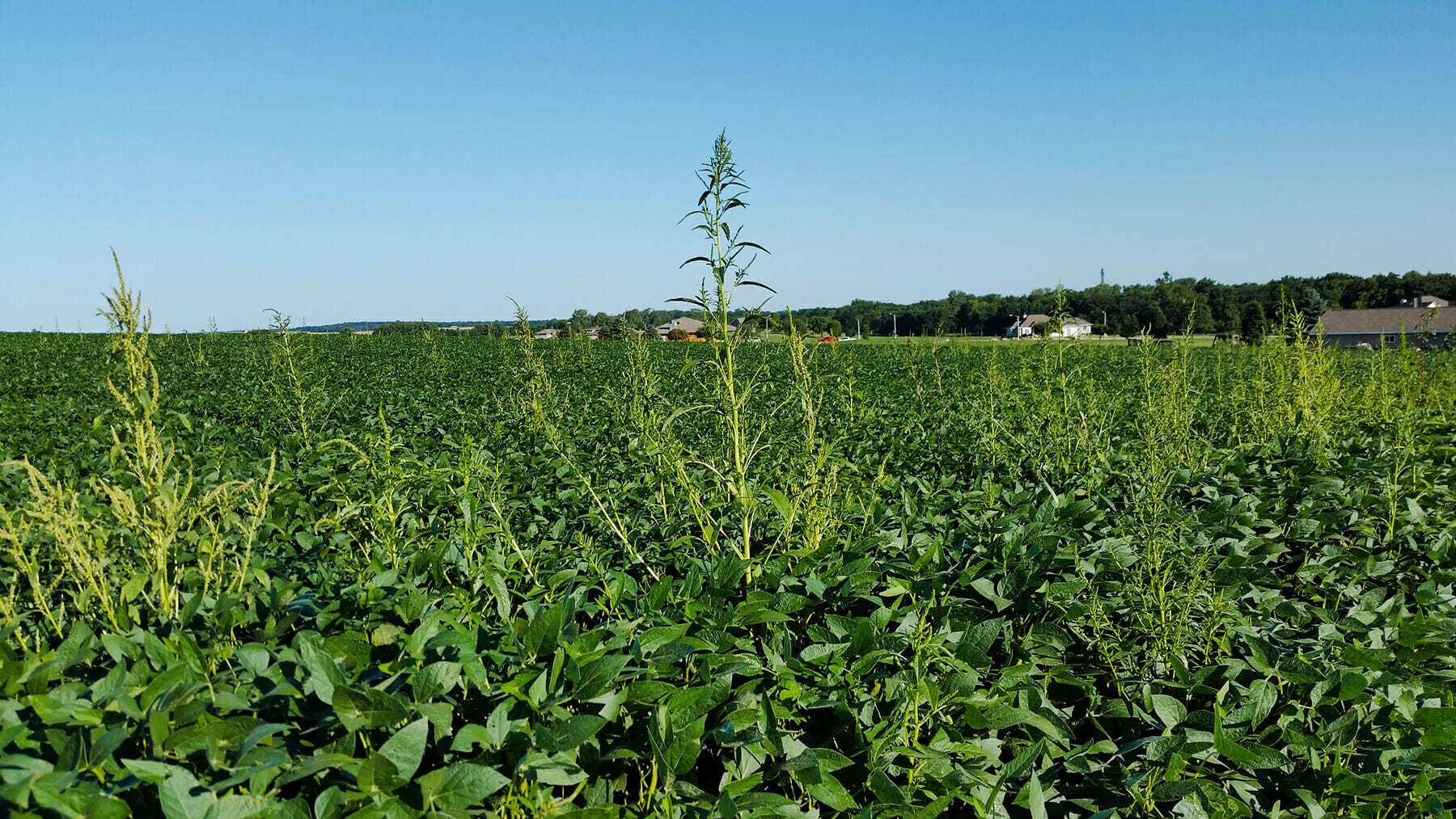
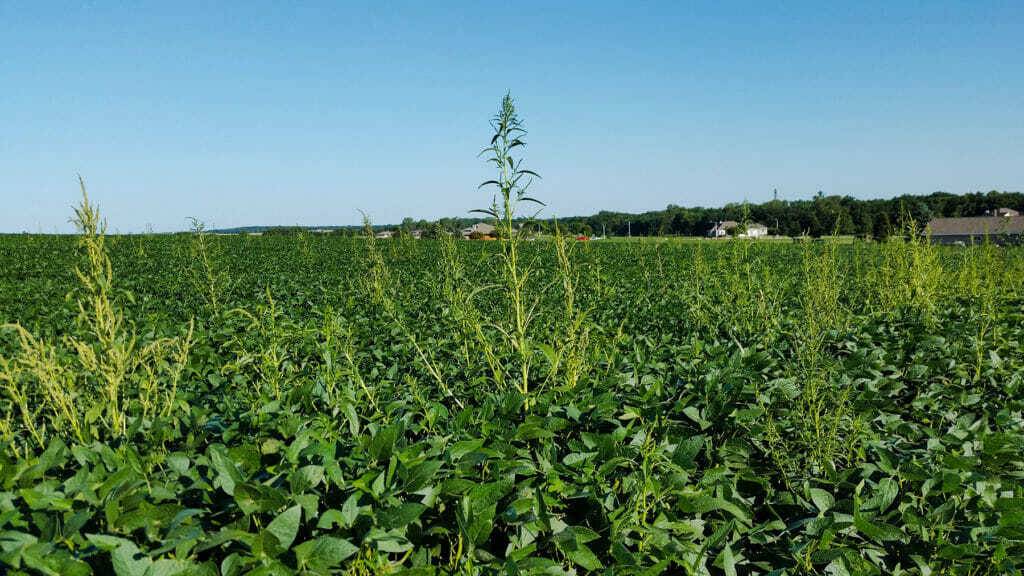 Mother Nature throws a few curveballs each season and 2021 is no exception. Our crops are suffering from drought, but weeds are thriving across Latham Country. Herbicides are not as effective when weeds are not “actively growing” as has been the case this season. Grass herbicide tank mixes were much less effective this year due to dry growing conditions and antagonism in the plant.
Mother Nature throws a few curveballs each season and 2021 is no exception. Our crops are suffering from drought, but weeds are thriving across Latham Country. Herbicides are not as effective when weeds are not “actively growing” as has been the case this season. Grass herbicide tank mixes were much less effective this year due to dry growing conditions and antagonism in the plant.Because weeds always find a way to succeed and survive, we need an integrated approach to manage them. Below are few things you can do this year to combat weeds next year:
- Document the worst fields. Latham’s FREE Data Forward® app scouting tool allows you to drop a pin in the field where you see weed escapes. Late summer is the best time to do this as you’re doing yield estimates and late-season field visits. As the crops mature, you can easily see those green weeds poking though. Then later this fall make sure you’re selecting the right herbicide- resistant traits in your soybeans to put up the best fight against them in 2022.
- Spray early and layer residuals. Don’t go away from applying residual herbicides just because Latham is offering Enlist® E3 and Xtend® traits. No matter which soybean traits you’re planting, residual herbicides should be part of the program. Layering herbicides in the early season and then in your post application will be most beneficial. In 2021, we sprayed taller weeds. Then drought prevented soybean rows from closing quickly enough, so we had late flushes of weeds after a rain. Prepare to spray weeds when they are small, regardless of soybean growth.
- Try cover crops. Cereal rye reduces the density of waterhemp early in the growing season, which in turn allows herbicides to be more effective on smaller weeds, according to a multi-state study funded by the United Soybean Board. If you have a field with strong waterhemp pressure in corn this year, cereal rye is an excellent tool to help prevent your fields from being overrun by waterhemp next year.
- Dig out the iron. I saw row cultivators appear this year in areas to help slow down the weeds and allow the soybeans to close the rows. Extra tillage is not advantageous for the soil structure and limiting runoff, but in a year when herbicides are less effective, sometimes we must drag the iron to the battlefield.
It’s all about an integrated approach. No matter how many options we have for herbicide traits, weeds will always foil our best efforts. It’s time to put on our fighting gloves and manage each field based on its weed control needs.
-
Latham Hi‑Tech Seeds
#AskTheAgronomist: Foliar Feeding Soybeans

Precision Agronomy Advisor Phil Long addresses a series of questions about foliar feeding soybeans and shares some tips and practices to help with return on investment.
-
Latham Hi‑Tech Seeds
5 Key Takeaways from XtendFlex® and Enlist E3® Systems
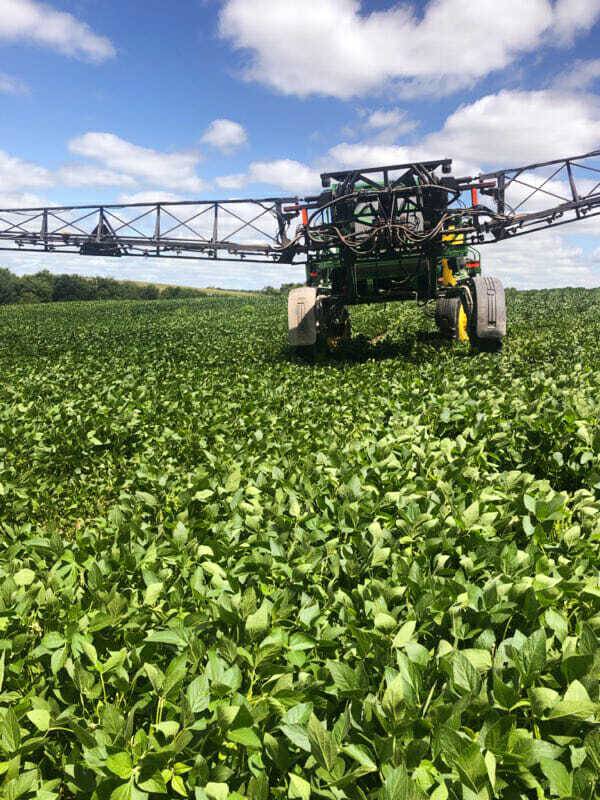
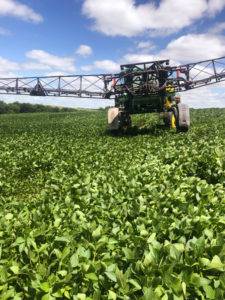 Based on a recent needs assessment poll conducted by Latham Hi‑Tech Seeds, the top two soybean trait technologies for 2022 planting will be Enlist E3® and XtendFlex® soybeans.
Based on a recent needs assessment poll conducted by Latham Hi‑Tech Seeds, the top two soybean trait technologies for 2022 planting will be Enlist E3® and XtendFlex® soybeans.Both technologies have triple-stacked traits, featuring tolerance to glyphosate (Roundup) and glufosinate (Liberty®) herbicides. Enlist E3 soybeans also are resistant to 2,4-D Choline herbicides (Enlist Duo® & Enlist One®). For XtendFlex® soybeans, the 3rd tolerance is to dicamba herbicides like XtendiMax®, Engenia® and Tavium®.
Do everything you can now to keep resistant weeds from gaining a foothold in your fields. Following are five key takeaways for effectively using weed control programs with both trait packages:
- Start with a clean field. One or two tillage passes may be necessary to take care of emerged weeds. For no-till operations, a good burndown herbicide program is needed.
- Always use a pre-emergent herbicide program whether before or after you plant. Consult your local ag chem retailer for herbicide recommendations for your area but try to use a program with multiple herbicides and sites of action.
- Use a strong (multiple site of action) post-emergent herbicide program.
For post-emergent applications in Enlist soybeans: I like what I’ve seen when Enlist One and Liberty are applied together. Pay attention to weed size, the stage of your crop, and label rates. If needed, you can use a second application of Enlist One if you wait at least 12 days and it’s before the full bloom stage (R2).
For post-emergent applications in XtendFlex soybeans: You CANNOT tank mix any dicamba-based product with Liberty! I like applying XtendiMax (plus applicable tank mix partner/s) either pre-emergence or early post-emergence and then having the flexibility to come back at or before R1 with Liberty. This maximizes the benefits from this new technology while keeping you in compliance with the EPA-approved herbicide labels. Applying XtendiMax early also decreases the chances of off-target dicamba movement to sensitive crops.
- As always, read and follow all label directions for herbicide use. Whoever applies these herbicides is directly responsible for knowing the labels, including all setback and buffer requirements.
- Knowing what is planted where is a matter of crop life and death. All forms of dicamba and 2,4-D belong to the auxin (Group 4) chemical family but react differently, depending on the herbicide trait package being used. Remember, this family primarily controls broadleaf weeds. Most grasses show little or no effect from the application of Group 4 herbicides. XtendFlex and Xtend soybeans are tolerant only to dicamba-based products and can be killed with an application of any 2,4-D product. Likewise, if you spray Enlist E3 soybeans with dicamba, they will die.
-
Latham Hi‑Tech Seeds
#AskTheAgronomist: High-Yield Soybeans and Node Count

As the calendar moves closer to harvest, many farmers are looking to gauge yield expectations in soybean fields. In this week’s segment, Precision Agronomist Phil Long explains the correlation between node count, spacing, population and yield.
-
Latham Hi‑Tech Seeds
6 Tips for Harvesting Corn Silage in Drought Conditions
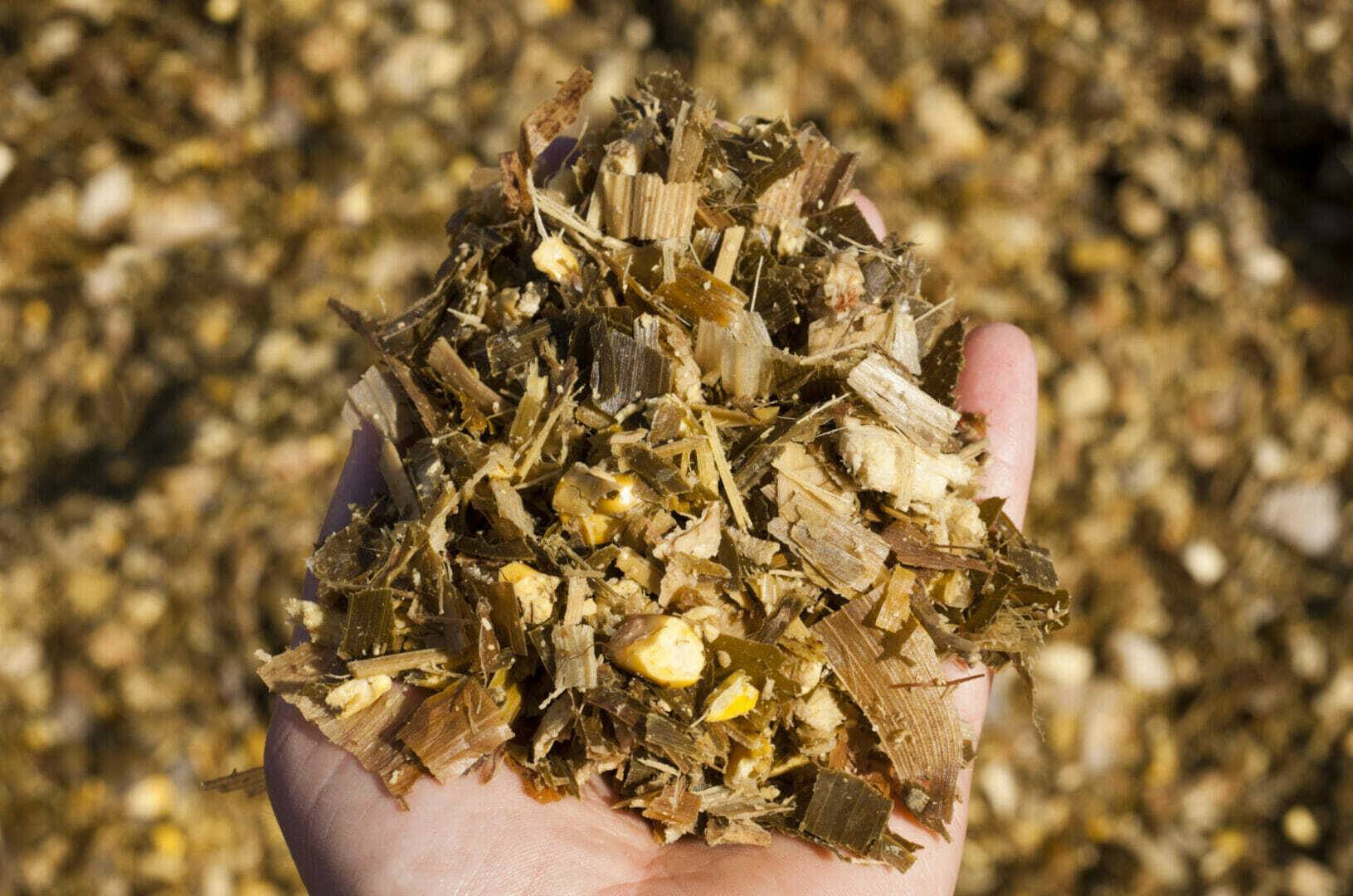
Drought-stressed corn can create a range of silage harvest issues. With much of Latham Country experiencing abnormal to extreme drought conditions, risks such as high nitrate levels, variable moisture content and potential for yeasts, molds and mycotoxins must be accounted for and well understood.
Taking extra precautions to ensure a safe and productive corn silage harvest is a worthy investment. Here are a few key considerations to keep in mind this summer and fall.
- Consult your team. Before you make any corn silage harvest decisions, verify your plan doesn’t impact your insurance coverage. It’s also good to discuss feed-out plans with an animal nutritionist so you have a plan for when and how the forage will be used.
- Test chopping height. As you prepare to harvest silage, test various chopping heights for nitrates. Nitrate concentration tends to lessen as chopping height increases. Measure your chopping height and then send a 5-inch stalk sample to the lab. It is best to send at least two samples. By testing different heights across the plant, it gives you a general idea of nitrate hot zones. Also, remember that recent rains can increase nitrate levels.If you harvest high on the stalk to avoid high nitrate levels, your tonnage will be reduced. It is estimated that you harvest 1 ton per foot of no ear or poorly eared corn.
- Monitor moisture content. As fields vary, so too will harvest moisture. Ideally, you want to get to 65% whole plant moisture. If it is drier, packing can be difficult but mixing in small particles can help if needed.
- Test on harvest day. Testing nitrate levels on harvest day will give you a good frame of reference for the final product. If it shows high, do not feed it to pregnant animals, and consult with your nutritionist regarding feeding to it the rest of your livestock. Allow this crop to ensile at least 21 days, and then retest.
- Innoculate. Anything to help ensile and preserve the forage after chopping is important. Because drought-stressed corn can be so variable in content, moisture and packing densities, it can lead to potential issues with high nitrates, mold, yeasts and mycotoxins. A good inoculant can help the fermentation process and reduce any further problems during feed out.
- Test before you feed. Ensiling can help reduce nitrate levels by as much as 40-60%, but the final nitrate levels can be dependent on good packing. It is always best to test before you feed silage to livestock. As a rule of thumb, take at least two samples from different areas of the silage pack. One sample is just a number, two samples start the trend and three samples add confidence. There is just too much at stake to risk nitrate poisoning.
While Mother Nature can certainly throw some unexpected curve balls our way, these tips can help you make the best of a not-so-ideal harvest scenario.
-
Latham Hi‑Tech Seeds
#AskTheAgronomist: Which Yield Factor is Most Important?

Which yield factor has the most bearing on final yield: kernel round, ear length or test weight? Precision Agronomist Phil Long and Intern Kirsten Suntken do the math in this segment of #AskTheAgronomist.
